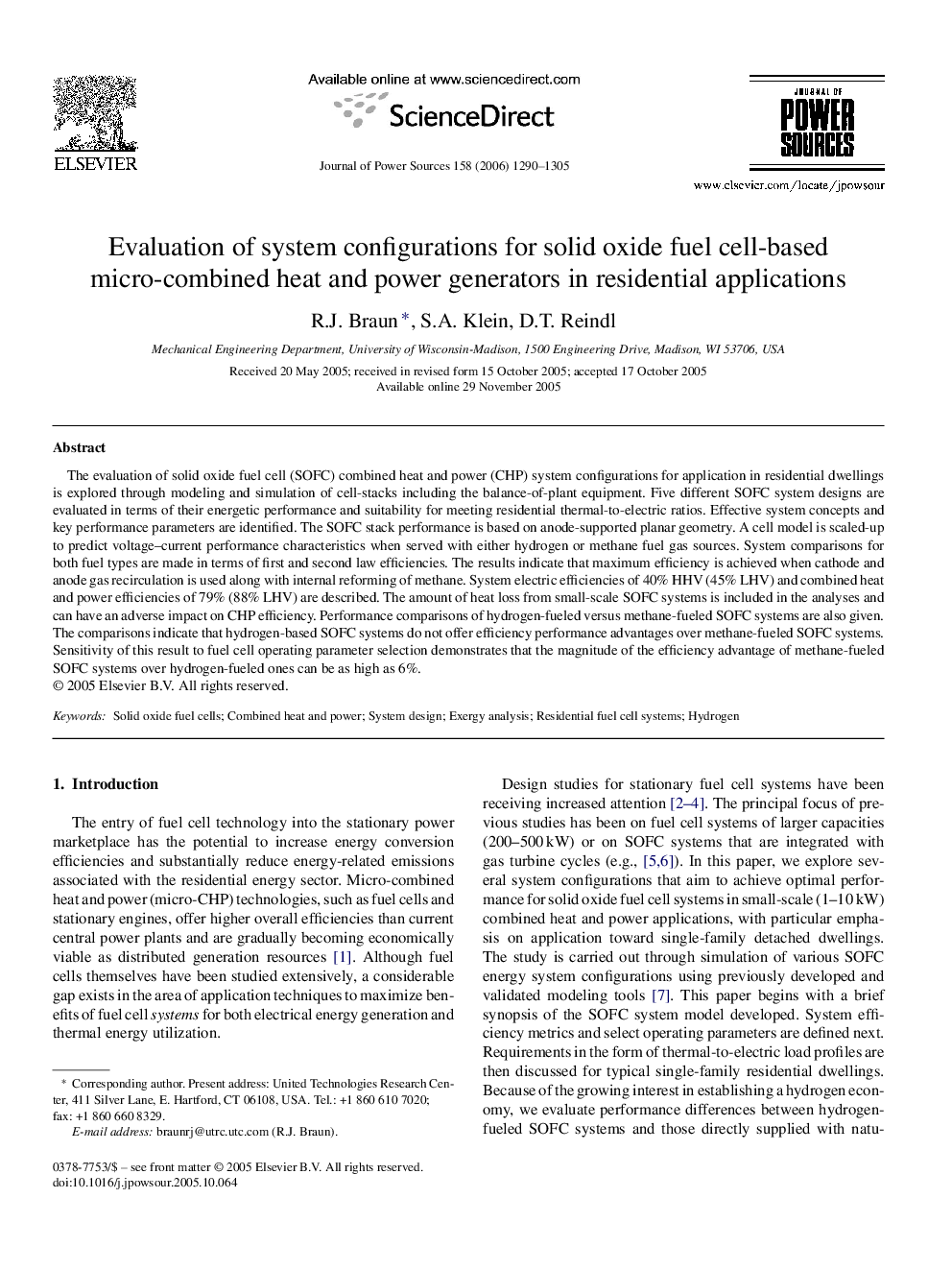| Article ID | Journal | Published Year | Pages | File Type |
|---|---|---|---|---|
| 1287402 | Journal of Power Sources | 2006 | 16 Pages |
The evaluation of solid oxide fuel cell (SOFC) combined heat and power (CHP) system configurations for application in residential dwellings is explored through modeling and simulation of cell-stacks including the balance-of-plant equipment. Five different SOFC system designs are evaluated in terms of their energetic performance and suitability for meeting residential thermal-to-electric ratios. Effective system concepts and key performance parameters are identified. The SOFC stack performance is based on anode-supported planar geometry. A cell model is scaled-up to predict voltage–current performance characteristics when served with either hydrogen or methane fuel gas sources. System comparisons for both fuel types are made in terms of first and second law efficiencies. The results indicate that maximum efficiency is achieved when cathode and anode gas recirculation is used along with internal reforming of methane. System electric efficiencies of 40% HHV (45% LHV) and combined heat and power efficiencies of 79% (88% LHV) are described. The amount of heat loss from small-scale SOFC systems is included in the analyses and can have an adverse impact on CHP efficiency. Performance comparisons of hydrogen-fueled versus methane-fueled SOFC systems are also given. The comparisons indicate that hydrogen-based SOFC systems do not offer efficiency performance advantages over methane-fueled SOFC systems. Sensitivity of this result to fuel cell operating parameter selection demonstrates that the magnitude of the efficiency advantage of methane-fueled SOFC systems over hydrogen-fueled ones can be as high as 6%.
